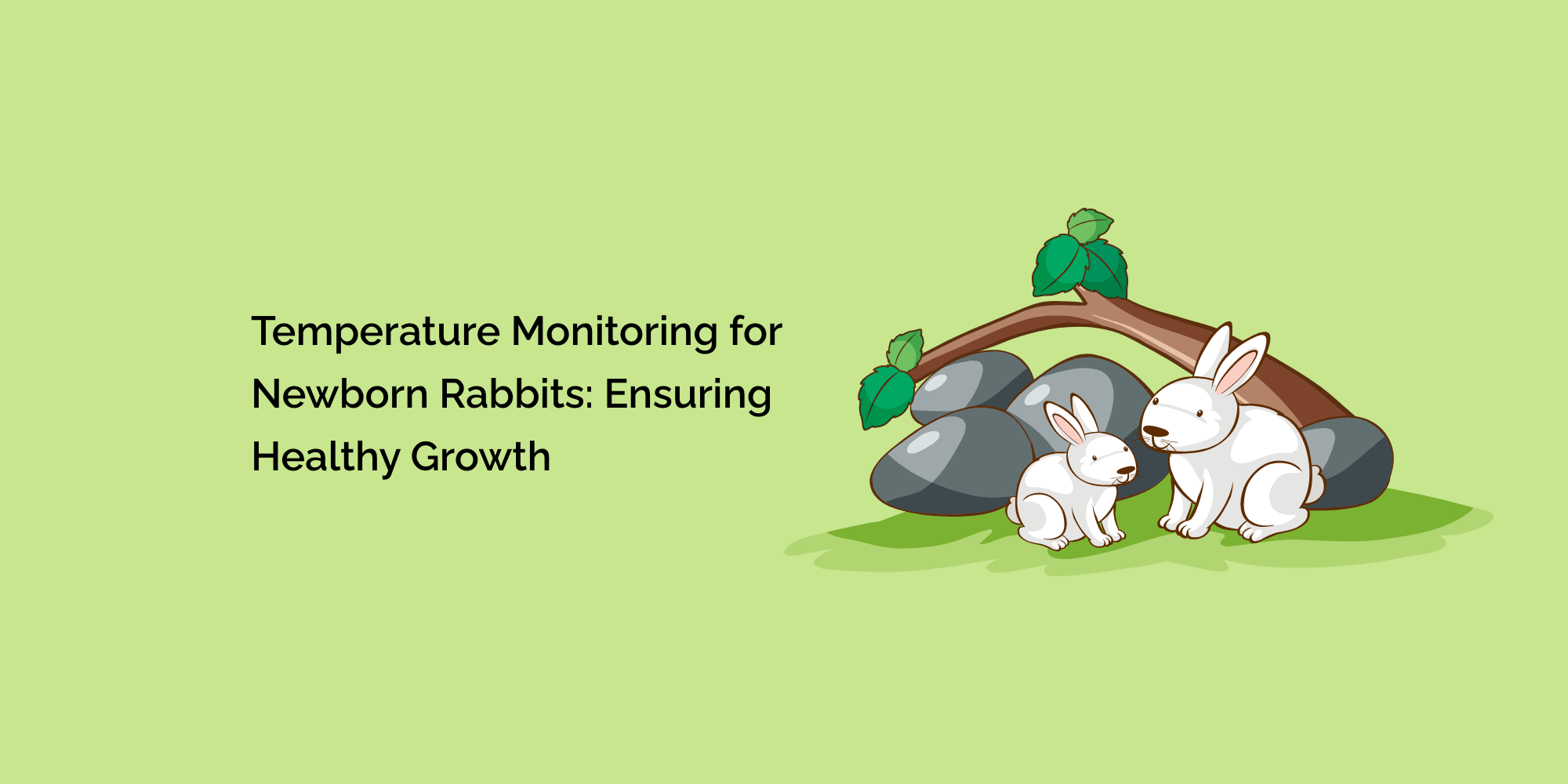The early stages of a rabbit's life are crucial for healthy growth and development. Newborn rabbits, also known as kits, are particularly vulnerable to temperature fluctuations, which can impact their overall well-being and survival.
Maintaining an optimal and stable temperature is essential to ensure the health and growth of these delicate creatures.
In this blog, we will explore the importance of temperature monitoring for newborn rabbits and discuss effective strategies to create a warm and nurturing environment that supports their healthy growth.
Understanding Newborn Rabbits' Temperature Sensitivity
The Vulnerability of Newborn Kits
Newborn rabbits are born without fur and have limited abilities to regulate their body temperature. Their dependency on the mother's warmth makes them highly susceptible to cold stress, which can lead to health issues and even mortality.
Optimal Temperature Range for Newborn Kits
The ideal temperature range for newborn kits lies between 85°F to 90°F (29.4°C to 32.2°C) during the first week of their lives. Maintaining a warm environment within this range is essential to ensure their healthy growth and development.
The Impact of Cold Stress on Newborn Kits
Health Issues Caused by Cold Stress
Exposure to temperatures below the recommended range can lead to cold stress in newborn kits. This condition affects their immune system, making them susceptible to infections and illnesses. Additionally, cold stress can hinder their growth, resulting in stunted development.
Increased Mortality Rates
Cold stress is a significant contributing factor to high mortality rates among newborn kits. Without adequate warmth, they may succumb to hypothermia, leading to a tragic loss for rabbit breeders.
Strategies for Temperature Monitoring and Management
Utilizing Temperature Sensors
Temperature sensors placed in the nesting area of the mother rabbit can provide real-time readings, ensuring that the environment remains within the optimal range for newborn kits.
Gradual Weaning from Mother's Warmth
As newborn kits grow, they gradually become more independent and better equipped to regulate their body temperature. Breeders should monitor their development and adjust the temperature accordingly, allowing them to acclimate gradually.
Supplemental Heat Sources
In colder climates or during colder seasons, providing supplemental heat sources, such as heat lamps or heating pads, can help maintain the desired temperature in the nesting area.
Maintaining Proper Nesting Conditions
Quality Nesting Materials
High-quality nesting materials, such as straw or hay, offer insulation and comfort for newborn kits. The nesting area should be clean and dry to prevent cold and dampness.
Adequate Nesting Space
Ensuring sufficient nesting space allows the mother rabbit to adequately cover and protect her kits, providing them with the warmth they need for healthy growth.
Monitoring Kits' Behavior and Health
Observation and Interaction
Rabbit breeders should regularly observe the behavior of newborn kits to ensure they are comfortable and thriving. Interaction with the kits should be limited to minimize stress on the mother and her offspring.
Prompt Action in Case of Cold Stress
If signs of cold stress are observed, such as shivering or lethargy in the kits, immediate action is necessary. Providing additional heat and seeking veterinary assistance, if required, can save their lives.
Conclusion
Temperature monitoring for newborn rabbits is a critical aspect of responsible rabbit breeding. By maintaining an optimal and stable environment for the kits, breeders can ensure healthy growth and development. A warm and nurturing nesting area, along with regular temperature monitoring, can significantly reduce the risk of cold stress and related health issues.
With proper care and attention to temperature, rabbit breeders can create a supportive environment that fosters the well-being and growth of their precious newborn kits. Ultimately, ensuring the healthy start of these delicate creatures paves the way for a successful and fulfilling rabbit breeding experience.








